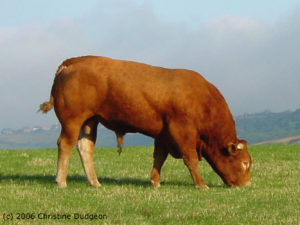The Cost Of Bull Infertility
23 March 2018The cost of bull infertility will vary considerably depending on the exact circumstances. In the following example we have compared a completely infertile bull v a sub fertile bull. For the sub fertile bull we have assumed conception rates of 30% compared with 60% for a fertile bull.
Bulls Running Permanently With A Single Group Of Cows
The following table shows the impact of bull fertility in terms of the number of cows becoming pregnant in each cycle and the number of animals barren after a 12 week mating period. In all cases the bull is running with 35 cows. For the completely infertile bull is has been assumed that his problem has been noticed during the fourth week of mating and that he is then replaced with a fertile bull for the remaining 8 weeks of the mating period. In comparison it has been assumed that the lower conception rate for the sub fertile bull goes unnoticed.
Effect Of Bull Fertility On Pregnancy Rate
| 1st Cycle | 2nd Cycle | 3rd Cycle | 4th Cycle | Barren | |
| Fertile Bull (60% CR) | |||||
| Number of cows cycling/returning | 25+ | 20+ | 8 | 3 | |
| Number pregnant | 15 | 12 | 5 | 2 | 1 |
| Sub Fertile Bull (30% CR) | |||||
| Number of cows cycling/returning | 25 | 27 | 19 | 13 | |
| Number pregnant | 8 | 8 | 6 | 4 | 9 |
| Infertile Bull | |||||
| Number of cows cycling/returning | 25 | 35 | 21 | 9 | |
| Number pregnant | 0 | 14++ | 12 | 5 | 4 |
+ Assumes 10 late calvers don’t start cycling until second cycle.
++ Fertile bull only available from week 4 onwards.
With a fertile bull there is just one barren cow after the 12 week mating period. In comparison the sub fertile bull results in 9 barren cows ie a calving rate of only 74%. For the infertile bull the number of barren cows is intermediate at 4, simply because he is identified and replaced.
The other impact of poor bull fertility is a reduction in the average age of the calves when they are weaned. This effect is shown in the next table.
Overall Production
| CR (%) | No Cows | Average+ Calf Age At Weaning | Tonnes++ Calf Weaned | Value £ | ||
| Pregnant | Barren | @ 250p/kg | ||||
| Bull Run With Only 1 Group | ||||||
| Fertile | 60 | 34 | 1 | 211 | 8.70 | 21,750 |
| Sub Fertile | 30 | 26 | 9 | 192 | 6.16 | 15,400 |
| Infertile | 0 | 31 | 4 | 190 | 7.28 | 18,200 |
+ Assumes herd weaned 250 days after calving starts.
++ Assuming DLWG 1.0 kg/day, birth weight 45 kg.
Assuming weaning occurs 250 days after calving starts the average age of the 34 calves produced by a fertile bull is 211 days. In comparison the calves produced by the sub fertile bull are nearly 3 weeks younger at just 192 days. The combined effect of fewer, younger calves weaned results in the infertile bull producing around 1.5 tonnes less calf weight and the sub fertile bull producing early 2.5 tonnes less calf weight.
Conclusion
Interestingly the most common problem animal – the sub fertile bull – has the biggest loss, probably throughout his lifetime, as he is never identified, particularly where bulls are changed between groups during mating. The answer is simply to give all bulls a Breeding Examination and semen testing 2 months prior to mating starting.
Basil Lowman, Basil.lowman@sac.co.uk
Sign up to the FAS newsletter
Receive updates on news, events and publications from Scotland’s Farm Advisory Service

